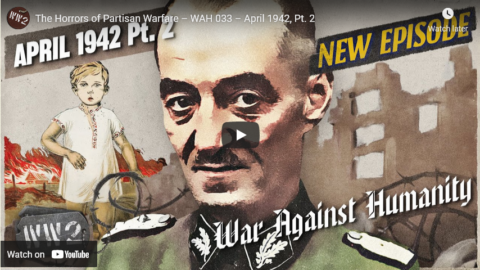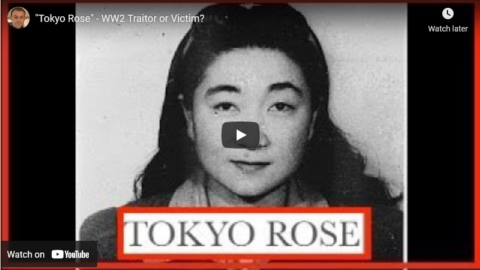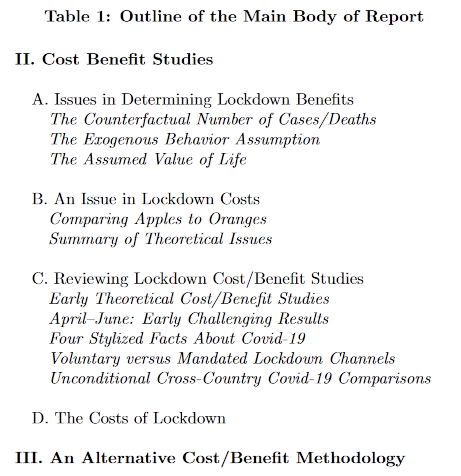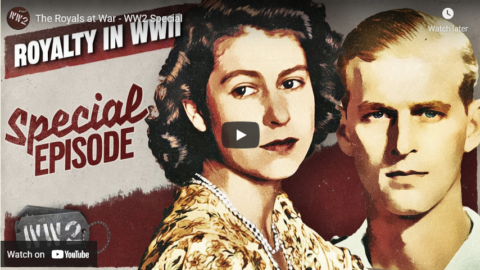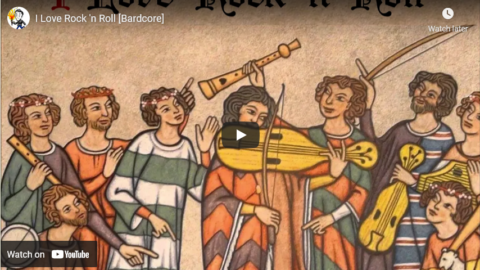World War Two
Published 29 Apr 2021April 1942 sees bombing campaigns in Germany and Britain, as well as German anti-partisan actions in the Balkans and Eastern Europe.
Join us on Patreon: https://www.patreon.com/TimeGhostHistory
Or join The TimeGhost Army directly at: https://timeghost.tvFollow WW2 day by day on Instagram @ww2_day_by_day – https://www.instagram.com/ww2_day_by_day
Between 2 Wars: https://www.youtube.com/playlist?list…
Source list: http://bit.ly/WW2sourcesHosted by: Spartacus Olsson
Written by: Spartacus Olsson and Joram Appel
Director: Astrid Deinhard
Producers: Astrid Deinhard and Spartacus Olsson
Executive Producers: Astrid Deinhard, Indy Neidell, Spartacus Olsson, Bodo Rittenauer
Creative Producer: Maria Kyhle
Post-Production Director: Wieke Kapteijns
Research by: Joram Appel
Edited by: Miki Cackowski
Sound design: Marek Kamiński
Map animations: Miki Cackowski and Eastory (https://www.youtube.com/c/eastory)Colorizations by:
Klimbim https://www.flickr.com/photos/2215569…
Mikołaj Uchman
Spartacus Olsson
Daniel WeissSources:
IWM MH 24764, HU 36196, Q(HS) 256, D 16649
Yad Vashem 48AO3, 953, 86FO2, 3116/71
Bundesarchiv
Tito giving a speech in Foča, courtesy of Музеј Старе Херцеговине
Narodowe Archiwum Cyfrowe
Star of David, courtesy of Jacek Proszyk https://commons.wikimedia.org/wiki/Fi…
Picture of Gustav Braun von Stumm, courtesy of Thomas Föhl https://www.geni.com/photo/view/60000…Soundtracks from the Epidemic Sound:
Wendel Scherer – “Defeated”
Johan Hynynen – “Dark Beginning”
Jon Bjork – “Disposal”
Christian Andersen – “Barrel”
Wendel Scherer – “Growing Doubt”
Jon Bjork – “For the Many”
Reynard Seidel – “Deflection”
Gavin Luke – “Drifting Emotions 3”
Jon Bjork – “Icicles”
Gunnar Johnsen – “Not Safe Yet”Archive by Screenocean/Reuters https://www.screenocean.com.
A TimeGhost chronological documentary produced by OnLion Entertainment GmbH.
Update: TimeGhost had to repost a censored version of this episode and provided this explanation:
World War Two
1 hour ago (edited)
The original version of this video was age restricted by YouTube for containing pictures of dead bodies. We do not feel that it is correct to document these events by finessing history and self censoring, but YouTube has left us no choice. We have several problems with these age restrictions, but let’s start off with what an age restriction means on YouTube. In theory it simply restricts the video from anyone who isn’t over 18 and logged in to the YouTube platform, but in effect it does much more than that;1. It takes the video out of most subscribers’ feeds and notification lists
2. In some countries like for instance South Korea, for legal reasons it is not accessible at all, for anyone
3. YouTube ranks it lower in their recommendation engines sending out recommendations to view to only a fraction of the ‘normal’ recommendations
4. It can no longer be viewed off YouTube as an embedded video – meaning that it won’t display even on our own website
5. It gets a boiler plate informing the viewer that the content has been “identified by the community as offensive to some viewers”
6. On many mobile devices it cannot be shared with the YouTube app
7. In countries were legal proof of age is required for adult content you have to provide a driver’s license, or credit card proving you are over 18In effect that means that YouTube is soft censoring the video from a large section of potential viewers. The result is that we get around half, or less of the views on videos that are age restricted. And we should note that according to YouTube’s own system more than 90% of our viewers are over 18, so it’s not just an effect of losing underage viewers.
Now, this content is without any doubt hard to watch, but it’s educational content based on solid facts, documented through crystal clear academic research. It is about the crimes against humanity during WW2. It documents events that are to this day in 2021, denied by sympathizers of extreme ideologies. Because of the special importance for new generations to learn about these events, many countries, especially in the EU and North America, do not require in their youth protection laws or media regulation that this kind of content shall be for 18+ only. To the contrary many countries have these topics, told just as graphically as we document them on their school curriculum for ages 13 and above. Moreover, YouTube has in their own community guidelines a provision that allows for displays of violence, dead bodies, and so on in an educational context also for under 18s.
So in effect YouTube is here choosing to restrict, even censor content of high educational importance although they are not legally required to do so, and they have their own provisions to allow it to be unrestricted. Why do they do that? Well, we can’t read their minds, but we have some indications that;
A) they ere on the side of caution to avoid ANY legal risk.
B) They fear any kind of content that has to do with extremism, even when unmasking it after the advertising boycotts they faced a couple of years back.
C) when the community complains they put extra weight on those complaintsIt is item C that troubles us the most. We have over 500 videos on our channels – very many of them contain graphic images of death and violence for reasons of the topics we document. Among these videos, a few dozen have been age restricted, while the rest have not. The common denominator between the age restricted videos is that they document events, or phenomena that unmask extremism by historical Communists, Nazis, and Imperialists. Its is difficult to not see the common interest by sympathizers of these groups and YouTube. If you want something suppressed, and there’s an easy way to just get it suppressed by just pressing a button – is it not reasonable to assume that you would use that button? We’re not conspiracy mythologists, we don’t believe there is a conspiracy here, but just by creating a simple path to fulfill different, but in effect common interests YouTube has made it easy for deniers of crimes against humanity, and war crimes to suppress information about these events.
We have explained to YouTube that inadvertently they are supporting the exact kind of hateful extremism they are fighting against with their other sword arm. We have implored them to lift the age restrictions in the interest of what society has decided: that content like this needs to be freely accessible in the public space. Despite an otherwise good and healthy relationship to the platform operators who are after all our distribution partners,, we have been met with standard replies, and a denial for our request.
Once again we express our dismay, sadness, and disappointment that YouTube chooses to restrict access to content that should serve a greater good; that we do not forget the victims of atrocities and extremism so that we can learn from our past and improve our societies.
Never Forget.

